Designer Fotis Evans' conceptual store windows for Hermès, New York
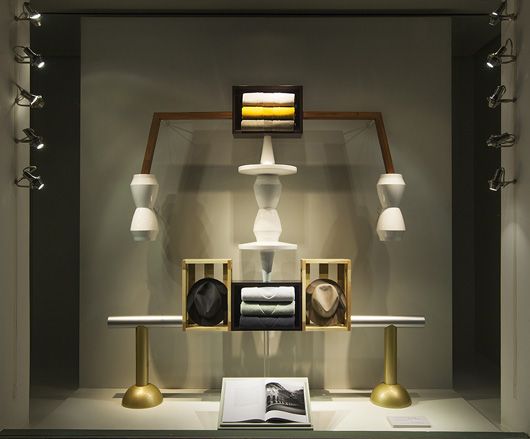
Great furniture doesn't always make great theatre, but the designer Fotis Evans has managed both. His multitasking modular furnishings amuse with both their form and their function, which is why his commissions often come from brands looking to turn product display into a major event.
Evans' windows for Hermès in New York dispense with the function entirely and focus on abstract forms borrowed from classical furnishings. Using as a text the remarkable 'Thomas Jefferson's Paris Walks', a visual chronicle of Jefferson's walking routes by the San Francisco-based boutique publisher Arion, Evans tells the history of late 18th-century Paris in five complex structures. Each employs elements of porcelain, black lacquer and verdigris tones to depict the era's spirit of discovery - however conceptually.
The London-based Greek isn't the first artist to have played window dresser for Hermès; the label recently launched a new store in Greenwich, Connecticut, with a scene by the Spanish installation artist Pamen Perreira. But here amid the high-end boutiques of Madison Avenue, Evans may have provoked a sea change - not only for his own burgeoning career but for shop windows as we know them.
We caught up with Evans in the run up to the launch...
What do you think it was about your work that first got Hermès' attention?
The director of digital merchandising mentioned that he saw the Book Stall System I designed for Somerset House. He suggested I design some sort of flea market installation in the windows, something that would display books, but I thought, 'Why make something so similar to what I'd made before?' I wanted to create something completely new from scratch.
Talk us through the concept.
I did a lot of research on Thomas Jefferson. Aside from the obvious, I learned about his sportsmanship - he loved horseback riding - his interest in architecture and the new innovations of that time. What really inspired me was that he was in Paris at the moment the city was seeing a building boom. And the most exquisite pieces of furniture were made at that time with exquisite detail. The city had reached the peak of excellence in craftsmanship.
My thought was to make some sort of sculptural work related to the settings of his walks. I looked at furniture and objects made by craftsmen at that time and isolated the materials - gold, silver, mahogany, porcelain, marble, Japanese lacquer - and said, 'OK, let's create something monumental,' because obviously this is what it was all about at that time. I put all the materials together into abstract figures - though some might say they have a specific meaning.
They do seem like they possess very specific qualities or functions.
There was lots of innovation happening at that time, so I wanted to reference it in the sculptures: the spinning jenny, hot-air balloon, the telescope… but again it's very abstract. In the end, the idea was to create some kind of memory, like a sculptural collage.
Were you nervous about taking a departure from the typical shop window, with all its flourishes and activity?
I think people are actually very bored of the literal. My idea was to take these over-the-top ideas and translate them with the epitome of craftsmanship. If you had 10 seconds to go back to that time, to tour all these places Jefferson went to, this is what it would look like reconstructed.
What I did was deconstruct all the scenes and furniture I found through my research and separate all the materials and recreate a memory that combines the innovations of that time.
It must have been a challenge to create a single object that would dominate each window space.
The challenge was to give focus to a specific point on each window. Your eye is completely lost if you can't focus on one thing at a time. But by collecting memories, images, materials, I wanted to give the person who passes by the idea that he has seen that moment in one single object. Every window tells a story of that time. But at the same time, it doesn't tell the same story for every passer-by. The object of the exercise was that every person who passes by says something new.
We haven't seen anything like this from Hermès. Was it a tough sell?
They're up for a challenge and always looking for new artists to create their windows. But they were also surprised when they first saw the sketches. They were worried how they'd make them. The objects combine so many materials, they had to be crafted by the best people in the city.
Where did you find those people?
I designed the project 100 percent, but I couldn't create it in London, so we trusted a group called Two Seven, which has experience making complicated things like this for window installations. I supervised them in how to make these five sculptures step by step and they followed to the letter.
What else have you been working on?
I recently worked with the jeweller Fernando Jorge, creating a series of stands for London Fashion Week that were made from volcanic sand. I took that material to another level. And that's what I'm planning to do again now. For quite a few months I've been working on a new material project - combining very new technology with very traditional, old materials, trying to take those materials to the next level.
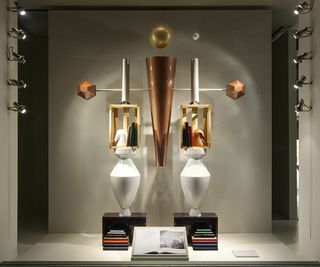
Inspired by 'Thomas Jefferson's Paris Walks', a remarkable new tome by the San Francisco-based boutique publisher Arion which visually chronicles the former US president's walking routes in Paris (Jefferson served as United States minister in Paris from 1784 to 1789), Evans tells the history of late 18th-century Paris in five complex structures
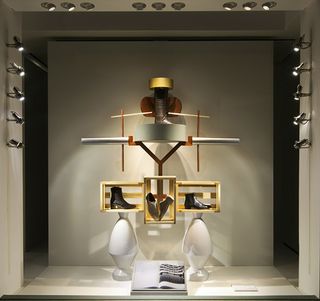
Each installation employs elements of porcelain, black lacquer and verdigris tones to depict, conceptually, the era's spirit of discovery
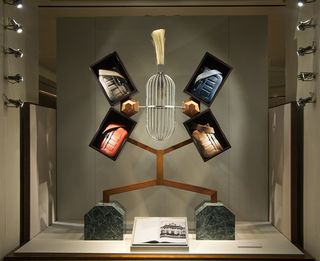
Evans says he referenced the innovations happening at that time - the spinning jenny, hot-air balloon, telescope - but in an entirely abstract way
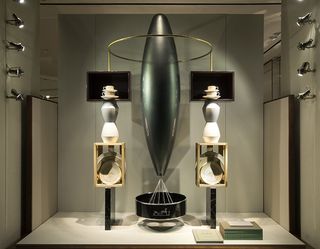
'The idea,' he says, 'was to create some kind of memory, like a sculptural collage'
ADDRESS
691 Madison Avenue
New York, NY
Wallpaper* Newsletter
Receive our daily digest of inspiration, escapism and design stories from around the world direct to your inbox.
Based in London, Ellen Himelfarb travels widely for her reports on architecture and design. Her words appear in The Times, The Telegraph, The World of Interiors, and The Globe and Mail in her native Canada. She has worked with Wallpaper* since 2006.
-
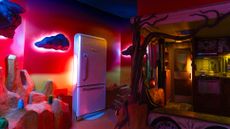 ‘Psychedelic art palace’ Meow Wolf is coming to New York
‘Psychedelic art palace’ Meow Wolf is coming to New YorkThe ultimate immersive exhibition, which combines art and theatre in its surreal shows, is opening a seventh outpost in The Seaport neighbourhood
By Anna Solomon Published
-
 Stanley Donwood on decades of Glastonbury poster design
Stanley Donwood on decades of Glastonbury poster designWhile Glastonbury fans huff and puff over this year's line-up announcement, we talk to the man responsible for designing the festival’s poster, for the last two decades
By Craig McLean Published
-
 Demna is heading to Gucci after a decade at Balenciaga
Demna is heading to Gucci after a decade at BalenciagaIn a day of fashion moves, it has been announced that Georgian designer Demna is set to exit Balenciaga to become creative director of Gucci, replacing Sabato De Sarno
By Orla Brennan Published
-
 This Colorado ski chalet combines Rocky Mountains warmth with European design nous
This Colorado ski chalet combines Rocky Mountains warmth with European design nousWood and stone meet artisanal and antique pieces in this high-spec, high-design mountain retreat
By Anna Solomon Published
-
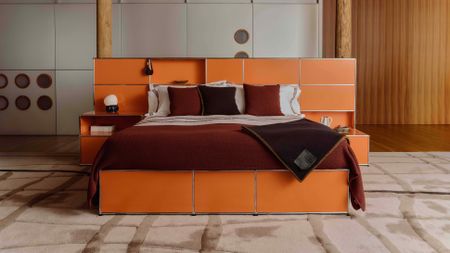 Swiss utilitarianism meets West Africa in this Armando Cabral and USM furniture collaboration
Swiss utilitarianism meets West Africa in this Armando Cabral and USM furniture collaborationA centuries-old West African motif signifying movement, adaptability, and progress served as the starting point for this collaboration between New York-based designer Armando Cabral and Swiss furniture brand USM
By Ali Morris Published
-
 Hilltop hideaway: Colony creates tranquil interiors for a Catskills retreat
Hilltop hideaway: Colony creates tranquil interiors for a Catskills retreatPerched between two mountain ranges, this Catskills retreat marries bold, angular architecture with interiors that offer warmth and texture
By Ali Morris Published
-
 Rio Kobayashi’s new furniture bridges eras, shown alongside Fritz Rauh’s midcentury paintings at Blunk Space
Rio Kobayashi’s new furniture bridges eras, shown alongside Fritz Rauh’s midcentury paintings at Blunk SpaceFurniture designer Rio Kobayashi unveils a new series, informed by the paintings of midcentury artist Fritz Rauh, at California’s Blunk Space
By Ali Morris Published
-
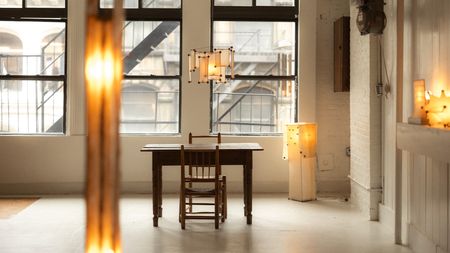 Sculptor James Cherry’s always playful and sometimes strange lamps set New York's Tiwa Gallery aglow
Sculptor James Cherry’s always playful and sometimes strange lamps set New York's Tiwa Gallery aglow‘It was simultaneously extremely isolating and so refreshing’: Los Angeles-based sculptor James Cherry on brainstorming ‘From Pollen’ at New York’s Tiwa Gallery
By Diana Budds Published
-
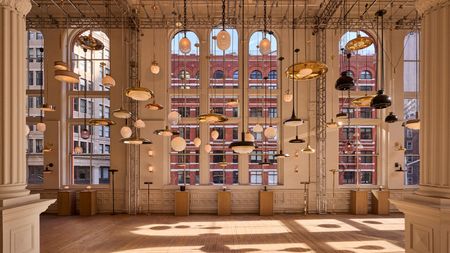 A celestial New York exhibition showcases Roman and Williams’ mastery of lighting
A celestial New York exhibition showcases Roman and Williams’ mastery of lightingLauded design studio Roman and Williams is exhibiting 100 variations of its lighting ‘family tree’ inside a historic Tribeca space
By Dan Howarth Published
-
 Brooklyn furniture studio Stillmade unveils its first collaborative design series
Brooklyn furniture studio Stillmade unveils its first collaborative design seriesStillmade brings to life the designs of four New Yorkers – Pat Kim, Danny Kaplan, Michele Quan and Mignogna Studio
By Pei-Ru Keh Published
-
 Blue Green Works's lighting champions a new aesthetic in American design
Blue Green Works's lighting champions a new aesthetic in American designManhattan-based design studio Blue Green Works fuses sensuality and masculinity to create mellow, mood-enhancing lighting with visual impact
By Pei-Ru Keh Published